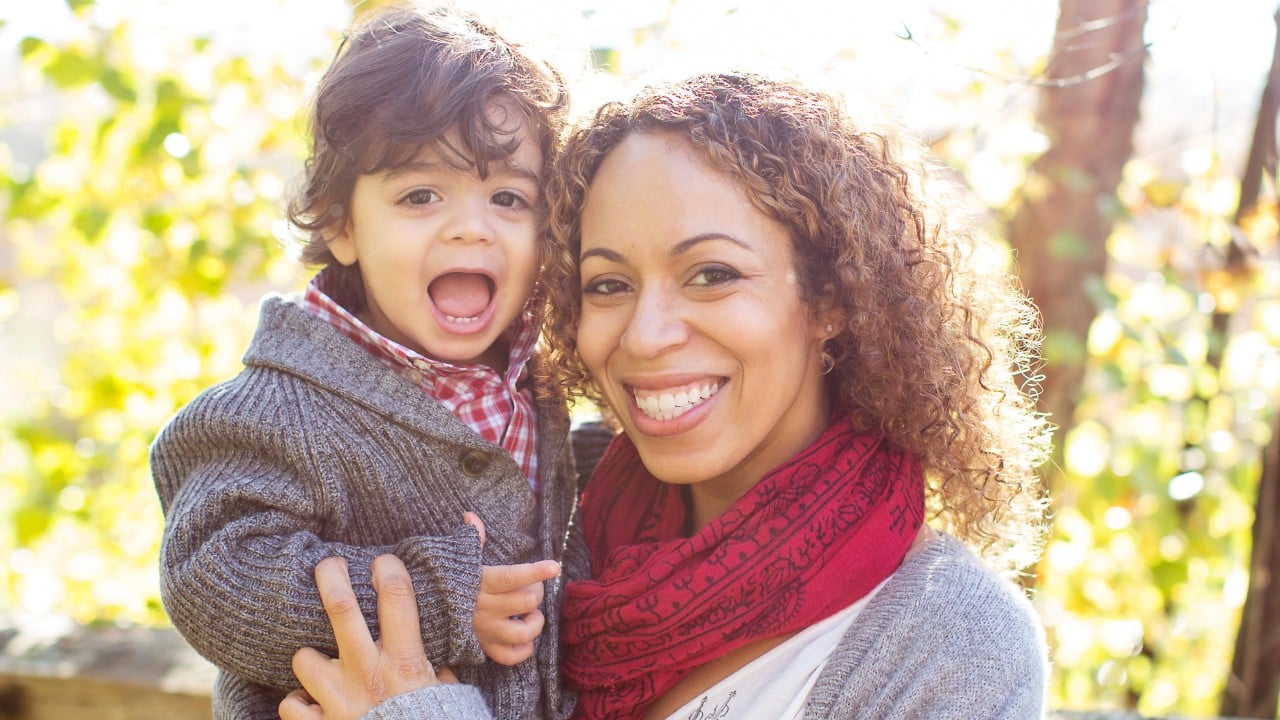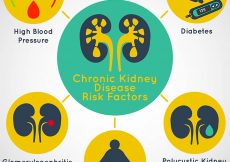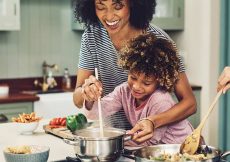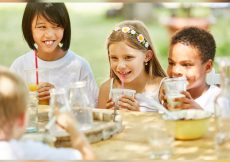Chezik Tsunoda on water safety, why Black and brown kids are more likely to drown and how her son’s death fueled her desire to combat the silent epidemic of childhood drowning.
Throughout the summer, families flock to the beach or local pools to escape the heat and play in the water. Not many consider that these places of fun could pose a serious risk. Yet according to the Canadian Hospitals Injury Reporting and Prevention Program, kids 9 or younger represented the largest percentage of drownings and near-drownings over the past decade, at 80%.
In 2018, mother-of-four Chezik Tsunoda experienced every parent’s worst nightmare when her preschooler, three-year-old Yori, drowned in a family friend’s pool. Since then, she’s dedicated her life to preventing childhood drowning. We talked to Tsunoda about the devastating loss of her son and how she’s using her nonprofit No More Under and documentary film, Drowning in Silence, to raise awareness about this often-overlooked issue.
When tragedies like childhood drownings happen, there’s a tendency to make certain assumptions about the parents. How would you describe your approach to parenting, both before and after Yori passed away?
I was a very cautious parent, and still am a very cautious parent. I had all the babyproofing things, all of the electric plug covers and baby gates. I was always checking in with my paediatrician on the important things to be watching out for with my kids.
What about your philosophy on water safety specifically? Was it important to you that your kids learn to swim?
I had my children in swim lessons and understood that they needed to learn how to swim. In the summer, I always travelled with life jackets in the trunk of my car because we live around the water and often went to the beach.
I also never went to the water with all of my kids alone. I recall one time my friends asked me to go to a pool and I said, “I can’t come because I have all my kids with me and I don’t have help.” It was something I understood I needed support with. That’s why I never considered that one of my children could drown—because I was someone who was safe around the water and safe in general.
What was Yori like?
He had a super big personality. He was just hilarious and wanted to make people laugh. He also really loved airplanes. He got a calendar one year, an airplane calendar, and he just studied and looked at them and it was like his favourite book. He could name any airplane—he’d look at an airplane and say, “Hey, that’s a P52!” at just three years old. He was a really loving kid, he loved to snuggle, have fun and loved cuddles. Beautiful kid. Beautiful hair. Amazing smile.
Can you walk us through the day he drowned?
We were at a friend’s place. The kids were all playing in the backyard pool and the dads were in there as well, just hanging out and playing. And then suddenly, one of the kids saw Yori. He was floating at the top, face down. We pulled him out and we attempted to do CPR. When the first responders came, they worked on him for quite a long time and then got him to the hospital, and we waited. Then at some point, he just wasn’t responding, so he was pronounced brain dead.
After Yori’s passing, you created a nonprofit called No More Under to raise awareness about childhood drowning. What does the organization do?
We’re about education, awareness and access. We educate families on the statistics of drowning, things you can do and tools you can have that will support you in swimming safely and being safe around water. Also recognizing that a lot of families have barriers, whether it’s ability or cultural barriers, that prevent them from getting to the pool.
We work to make the joy and life-saving skills of swimming accessible to everyone. The four things that we really focus on are the importance of life jackets; Water Watchers, which is designating one person who will focus on the pool or open water; swimming lessons; and CPR. These are things that would have potentially saved Yori.
We’re doing things like putting up life jacket loaner stations in our community to make sure that when people go to the beach they have access to them. We’re also putting children through swim lessons for free. And we work with our local paediatricians to make sure that they’re having the conversation about drowning.
You’ve said that childhood drowning impacts Black families in particular.
Black and brown children are three to five times more likely to drown than their white counterparts. A lot of that is generational, and it’s due to systemic racism because as late as the 1960s, pools were still segregated. And when they became desegregated, some of the pools closed down and private pools opened, which meant only the people who could afford memberships and afford country clubs were able to swim. It’s generational in that statistics show that if your grandparents don’t know how to swim, you’re more likely to not know how to swim either.
Tell us about your documentary, Drowning in Silence. It must have taken an incredible amount of strength to turn such a tragedy into advocacy.
About a year after Yori died, I knew that I needed to do something. I needed to make sure that it didn’t happen to someone else. The medium of film is really powerful in that it can reach the masses and I happen to have a background in production.
I started by interviewing Yori’s paediatrician. Then I slowly started reaching out to other people, parents and families who’ve had a similar experience, and it just all came together. I definitely feel like it was meant to be.
And so the film is twofold: It’s a beautiful legacy for my son and the other children that are in the film and their families, and it’s also just a great vehicle to allow viewers a peek into this violent epidemic of drowning and the aftermath of losing a child to drowning.
What does every parent of a small child need to know about drowning?
I don’t want to scare people—I don’t want drowning to be something you fear, because water is beautiful, and swimming is fun, it’s a form of exercise and it’s a lifelong skill. But I would say know: before you go and don’t take your eyes off your family. Because it unfortunately can happen to anyone. And it’s quick. It’s incredibly quick and it’s incredibly silent. In the movies, people are splashing and saying “Help! Help!” In reality, it was eerily silent.
And talk to your kids about it, and teach them to always ask for permission before they go in. If every time your kid got in the pool, they said, “Hey, Mommy, I’m getting ready to get into the water. Is that OK?” then your attention will be focused there. Because that’s what happens. In my case, we just weren’t really paying attention, but a lot of parents say they thought their kid was napping or doing whatever and next thing you know, they’ve slipped out and gone to the water.
Nobody thinks this will happen to them. How do you overcome that and get through to other parents?
In the time that it takes for you to read a text message and reply back, your child can drown. That’s how quickly it happens. Drowning is one of those things that you can easily prevent just by keeping your eyes open. It’s not brain surgery—we can do this. We’re not waiting for a cure. It’s just watching our kids closely.
Stay in touch
Subscribe to Today’s Parent’s daily newsletter for our best parenting news, tips, essays and recipes.
= 0;if(!is_postback){return;}var form_content = jQuery(this).contents().find(‘#gform_wrapper_13’);var is_confirmation = jQuery(this).contents().find(‘#gform_confirmation_wrapper_13’).length > 0;var is_redirect = contents.indexOf(‘gformRedirect(){‘) >= 0;var is_form = form_content.length > 0 && ! is_redirect && ! is_confirmation;var mt = parseInt(jQuery(‘html’).css(‘margin-top’), 10) + parseInt(jQuery(‘body’).css(‘margin-top’), 10) + 100;if(is_form){jQuery(‘#gform_wrapper_13’).html(form_content.html());if(form_content.hasClass(‘gform_validation_error’)){jQuery(‘#gform_wrapper_13’).addClass(‘gform_validation_error’);} else {jQuery(‘#gform_wrapper_13’).removeClass(‘gform_validation_error’);}setTimeout( function() { /* delay the scroll by 50 milliseconds to fix a bug in chrome */ jQuery(document).scrollTop(jQuery(‘#gform_wrapper_13’).offset().top – mt); }, 50 );if(window[‘gformInitDatepicker’]) {gformInitDatepicker();}if(window[‘gformInitPriceFields’]) {gformInitPriceFields();}var current_page = jQuery(‘#gform_source_page_number_13’).val();gformInitSpinner( 13, ‘https://www.todaysparent.com/wp-content/plugins/gravityforms/images/spinner.gif’ );jQuery(document).trigger(‘gform_page_loaded’, [13, current_page]);window[‘gf_submitting_13’] = false;}else if(!is_redirect){var confirmation_content = jQuery(this).contents().find(‘.GF_AJAX_POSTBACK’).html();if(!confirmation_content){confirmation_content = contents;}setTimeout(function(){jQuery(‘#gform_wrapper_13’).replaceWith(confirmation_content);jQuery(document).scrollTop(jQuery(‘#gf_13’).offset().top – mt);jQuery(document).trigger(‘gform_confirmation_loaded’, [13]);window[‘gf_submitting_13’] = false;}, 50);}else{jQuery(‘#gform_13’).append(contents);if(window[‘gformRedirect’]) {gformRedirect();}}jQuery(document).trigger(‘gform_post_render’, [13, current_page]);} );} );]]>



































